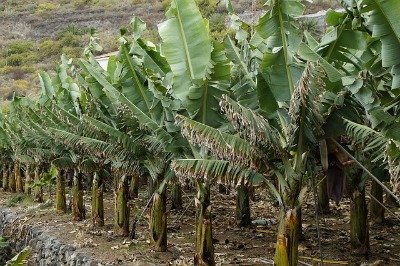The plant leaves are the lateral outgrowth of the stem which develops from the meristematic tissues of buds.
They are the part of the plant shoot which serves as the chief food-producing organ in most vascular plants.
To perform this function more efficiently, they are arranged on the stem and oriented to allow maximum absorption of sunlight.
It is also via leaves that loss of water from the plant body primarily occurs through the process of stomatal transpiration and guttation.

The leaves may be considered the most important life-giving part of the plant body.
The carbohydrate that is produced in the leaves in the process of photosynthesis sustains animal life, both directly and indirectly.
This organic compound contains the energy which the plant obtains from the sun, the same energy that powers animal and human life.
Likewise, the oxygen that plant leaves give off is essential to the continuing existence of animals and other aerobic organisms.
An important feature of leaves is the presence of stomata or stomates (sing. stoma).
Each stoma consists of a tiny pore surrounded by two specialized, sausage-shaped epidermal cells called guard cells.
These tiny pores are open and close to regulate the passage of gases and water to and from the leaves.
Stomata are located mostly on the undersides of leaves, but they are also present on the epidermis of other plant organs such as the stems, flowers, and fruit.
Leaves occur in various types according to size, shape, color, texture, form, and other characteristics.
Functions of Plant Leaves
1. Photosynthesis
The process of producing energy-rich food, known as photosynthesis, mainly occurs in the leaves of plants.
This process essentially involves the absorption of water via roots, of light mainly by the chlorophyll pigments, and of carbon dioxide via the stomatal pores in the leaves.
As a result of the cleavage of the water molecule during photosynthesis, oxygen is generated and released into the atmosphere.
This oxygen is the one utilized by aerobic organisms including plants themselves, humans, and other animals.
2. Transpiration
Plants lose a large volume of water through the leaves in the form of vapor.
The exit of water is through the stomata and the cuticle, but stomatal transpiration is largely more dominant than cuticular transpiration.
It is estimated that the loss of water via stomata through the process of transpiration exceeds 90 percent of the water absorbed by the roots.
Transpiration may be advantageous to the plant because of its cooling effect resulting from the expenditure of a portion of the plant’s heat energy in converting liquid water to water vapor.
There is wide support also that transpiration pull is responsible for the continuous ascent of water and nutrients from the roots to the topmost parts of trees.
But this process can be a disadvantage to the plant if transpiration loss exceeds the rate of water absorption through the roots.
3. Floral Induction
The plant leaves synthesize and translocate the flower-inducing hormone called florigen to the buds.
4. Food Storage
The leaves serve as food storage organs of the plant both temporarily and on a long-term basis.
Under favorable conditions, the rate of photosynthesis may exceed that of translocation of photosynthates toward other organs.
During the daytime, sugars accumulate in the leaves, and starch is synthesized and stored in the chloroplasts.
At nighttime, the starch is hydrolyzed to glucose and respired or converted to transportable forms like sucrose.
It has been demonstrated also that food is stored in the leaves until they senesce.
This food is exported to the stem before leaf fall and utilized in the subsequent shoot development.
5. Special Uses
In bananas, the leaf sheaths provide the physical support, often called pseudostem, to raise the leaves upward.
In a few insect-eating plants such as the pitcher plant, venus fly-trap, and sundew, plant leaves are so modified to trap visiting insects, then releasing enzymes and digesting them for their protein which is a source of nutrition.
In some plants such as Bryophyllum and Kalanchoe, the leaves serve as plants’ natural means of regenerating the species.
(Click here for examples of plants that can be propagated by leaf cuttings).
Would you like to improve your stock knowledge of the names of plants with edible leaves? Click here.
